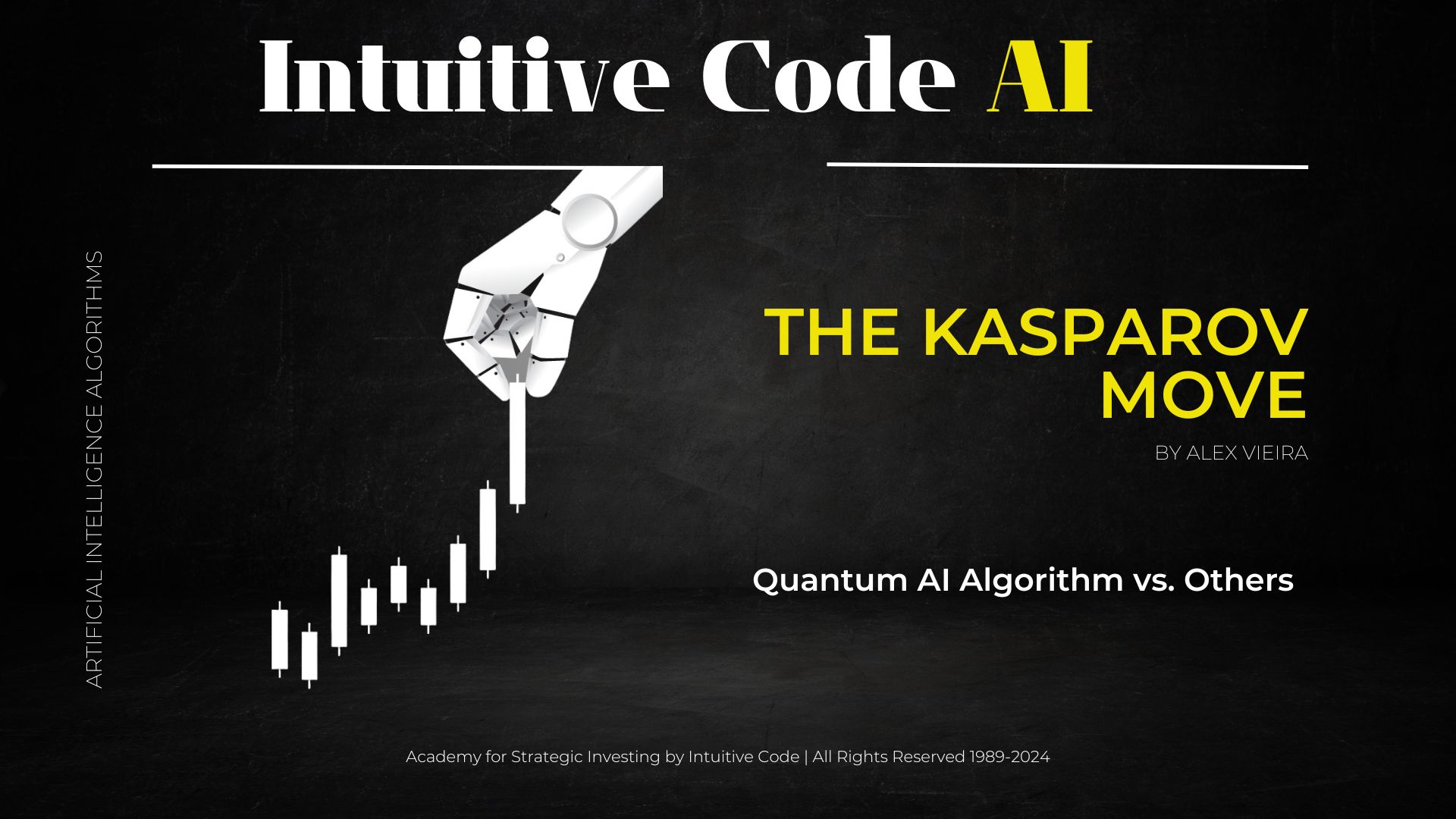The Kasparov Move: Use Case in Strategic Investing
This article provides a practical use case to illustrate how each phase of The Kasparov Move—STOP, FOCUS, SEE, and PLAY—can be applied to strategic investing. By walking through an example involving a volatile stock, you’ll see how this methodology guides each step, transforming complex decisions into manageable, structured actions.

Algorithm to Apply The Kasparov Move in Stock XYZ
STOP
Context: Stock XYZ has recently experienced high volatility after an earnings report.
Action: Begin by pausing to assess the current market conditions for XYZ. Reference Algorithm to Prevent Losses from Short Squeezes and Share Price Manipulation and Effective Intuitive Code AI Tools to Manage Stop Losses to evaluate potential risks related to share price manipulation and establish protective measures.
Outcome: The STOP phase enables the trader to identify and mitigate risks proactively, setting a foundation for a thoughtful approach.
FOCUS
Context: With significant noise around stock XYZ, the trader needs to narrow down the most relevant analytics.
Action: Use Algorithm to Select Your Portfolio Based on Stock Risk Profile and Uniqueness and Algorithm to Select Your Portfolio Based on Intuitive Code AI Analytics to evaluate key metrics, such as risk profile and stock uniqueness. This helps clarify the asset’s long-term potential and alignment with portfolio goals.
Outcome: Focusing on the relevant data points helps the trader filter out noise, maintain clarity, and strategically assess XYZ’s fit within their portfolio.
SEE
Context: To prepare for potential outcomes, the trader needs a well-rounded view of possible scenarios for XYZ.
Action: Refer to Perelman's Confidence and Perelman's Stability Analysis Parameters in Intuitive Code's AI Analytics to assess confidence levels and stability, and use the Getting Started Manual for Intuitive Code's Real-time AI Analytics Dashboard for real-time insights on market shifts.
Outcome: With a comprehensive view of XYZ’s stability, best-case and worst-case scenarios, and market trends, the trader can anticipate potential movements and adjust accordingly.
PLAY
Context: The trader is ready to act based on a calculated, data-driven strategy.
Action: Implement actions based on high-precision AI trading signals from AI Trading Signals: Your Guide to High-Precision Trading and leverage insights from Getting Started Manual for Intuitive Code's Quantum AI Trading and Analysis for ongoing monitoring and adjustments.
Outcome: By executing strategically and adapting in real-time, the trader maximizes potential gains while effectively managing risks associated with volatility.
Illustration of The Kasparov Move in Action: Alex Vieira’s Strategic Investment in Palo Alto Networks (PANW)
To illustrate the power and effectiveness of The Kasparov Move, we look at a real-world application by Alex Vieira, who successfully leveraged this strategy to buy back shares of Palo Alto Networks (PANW) after an overnight price drop from $380 to $260. By strategically applying the four phases—STOP, FOCUS, SEE, and PLAY—Vieira was able to capitalize on a market opportunity that no one else in the industry foresaw. Within a few months, Palo Alto Networks recovered all lost ground, eventually reaching new all-time highs. This remarkable success underscores how the combined use of the Kasparov Move, Intuitive Code’s advanced analytics, and exclusive datasets can deliver unparalleled results.
How Each Phase of The Kasparov Move Was Applied
STOP
Application: After the overnight crash, Vieira paused to assess the situation before taking any action. This initial STOP allowed him to avoid a reactionary move and assess the broader market conditions.
Outcome: By stopping first, he was able to gather insights on the reasons behind the crash, analyzing whether it was market-driven or based on company fundamentals.
FOCUS
Application: Vieira focused on critical data points for Palo Alto Networks, including AI-driven analytics and unique proprietary metrics. Using Intuitive Code’s algorithms, he evaluated the stock’s recovery potential, filtering out the noise from the market panic.
Outcome: The FOCUS phase clarified that the stock's fundamentals remained strong, suggesting that the crash was an overreaction, opening a buying opportunity.
SEE
Application: In the SEE phase, Vieira examined multiple scenarios for PANW’s recovery. He used Intuitive Code’s Perelman's Stability Analysis Parameters to assess the stock’s stability and Perelman's Confidence to gauge the probability of recovery. This phase included analyzing support and resistance levels, as well as best-case and worst-case outcomes.
Outcome: With a complete view of the potential recovery path, Vieira was able to identify the stock’s resilience and set a strategy aligned with his long-term objectives.
PLAY
Application: With a clear strategy in place, Vieira executed his buy-back plan for PANW. He closely monitored AI trading signals and ongoing updates from Intuitive Code’s real-time AI analytics to adjust his position as necessary.
Outcome: By following the PLAY phase with real-time adaptation, Vieira maximized his gains as PANW recovered its losses and reached new highs, a strategic success unparalleled in the industry.
Summary
This use case illustrates how The Kasparov Move can transform high-stakes decisions into structured actions. By applying each phase, traders are equipped to navigate volatility, avoid impulsive decisions, and take advantage of Intuitive Code’s Quantum AI tools for high-accuracy, data-driven outcomes.
Conclusion
This example demonstrates the effectiveness of The Kasparov Move in strategic investing, especially when combined with Intuitive Code’s advanced analytics and exclusive datasets. Alex Vieira’s ability to foresee and capitalize on Palo Alto Networks’ recovery is a testament to the power of this disciplined approach. By applying STOP, FOCUS, SEE, and PLAY, along with AI-driven insights, traders and investors can achieve high levels of accuracy and consistency, navigating even the most volatile market conditions with confidence and precision.
